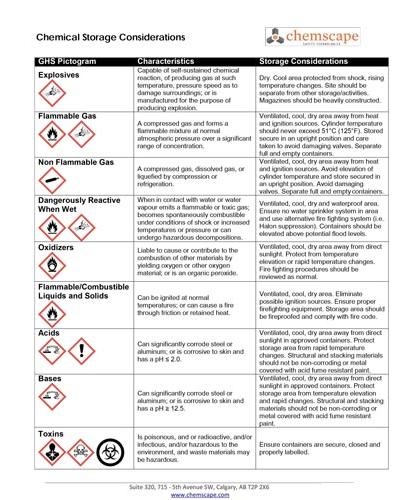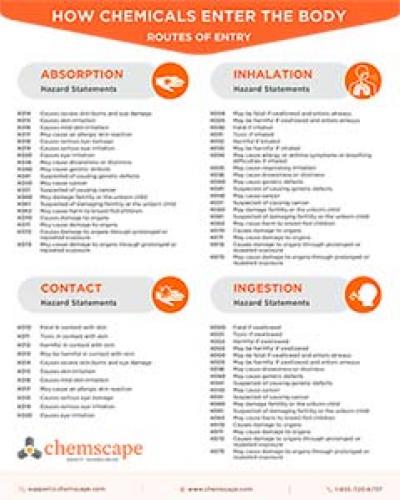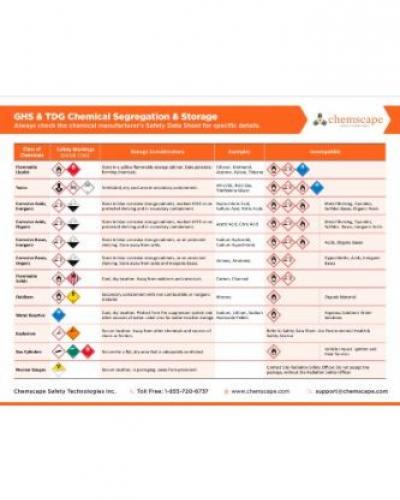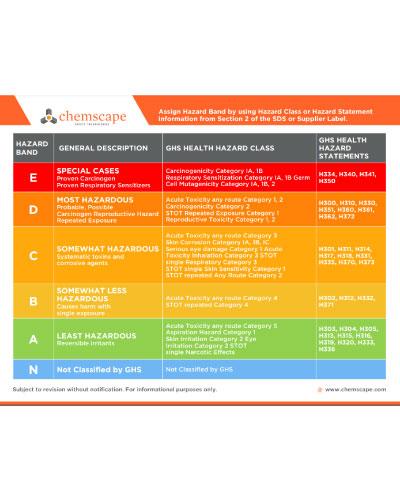Chemical Safety Management Fundamentals
Chemical safety management is an essential step in ensuring the health and safety and wellbeing of workers in the workplace. When properly implemented, it is considered a thorough procedure that will track chemicals throughout the various stages of the supply chain from procurement through to disposal.
For an in-depth understanding of chemical management in the workplace, trust the team of chemical safety management specialists at Chemscape Safety Technologies. For over fifteen years, we have been entrusted to provide chemical management solutions through our Chemical Hazard Assessment Management Program, designed for the unique requirements of each business and sector.
Get In-Depth Chemical Safety Information About Workplace Chemical Management
Browse our informative webinars, blogs and technical guides for current chemical safety information regarding best-practices and requirements in our Chemical Management resource centre.
Chemical Management Guides
PDFs and Other Resources
Chemical Management FAQs
A hazard is any potential source of harm, damage or adverse health effects on something or someone. To assess a hazard, you need to identify the hazards and risk factors that have the potential to do harm. Next you need to analyze and evaluate the risk associated with the hazard. Then you need to determine ways to eliminate that hazard or control the risk if the hazard cannot be eliminated.
Chemicals have physical, health and environmental hazards. See the hazard categories for chemicals with the GHS pictograms that have been adopted by Canada (WHMIS) and the USA (HazCom). If you do not use, store, handle or dispose of chemicals according to their guidelines and unique properties there is potential for harmful and potentially fatal consequences.
Chemicals can have short-term and long-term health effects on your body. It depends on many factors including how the chemical entered the body also known as the route of exposure. The four types of exposure include inhalation, ingestion, skin contact, skin absorption and injection. An injury like a chemical burn is immediate. Long term exposure and inhalation of silica dust can cause a lung disease called silicosis. Information on the health hazards and effects of a chemical is found in its Safety Data Sheet. This is why its important to have workers trained on the chemicals they handle and an SDS readily available in an emergency so you can refer to the SDS for more information.
The health hazard information is always found on section 2 of the chemical’s Safety Data Sheet. Information on the classification of the chemical, its related pictograms, and hazard statements are listed on this section of the SDS.
The hierarchy of control is the cornerstone of good chemical management. Chemscape follows this practise in the philosophy of their chemical management systems CHAMP. Good chemical management always look to control the chemical hazard starting at the top of the hierarchy using elimination, then substitution, engineering controls, administrative controls and finally with PPE. Elimination is considered the most effective method of chemical control and PPE is considered the least effective method of control.
TDG stands for the Transportation of Dangerous Goods. TDG is a federal Canadian standard that establishes rules and safety requirements for the movement of dangerous goods by rail, air, road and water. TDG has a list of substances that are considered dangerous goods. Training is a very important element of TDG. Employees must receive TDG training before they handle, ship or transport any dangerous goods in Canada.
TDG Training should include an understanding of the following:
- 9 Classifications of dangerous goods
- Shipping Names, Classes, UN Numbers and Packing Groups
- Use of Schedule 1, 2, 3
- Shipping Documentation
- TDG Safety Placards
- Selection and Means of containment
- ERAP
- Reporting requirements
- Proper use of equipment to handle and transport
- Emergencies and accidental releases
- Mixed loads and Special Situations
A TDG training certificate for road transport is valid for 36 months or 3 years from the date of issue. If you change jobs or transfer employers, you will need to retrain as TDG certification is not transferable between employers.
The following 3 groups of people should be trained in TDG regulations and workplace practices related to TDG. These groups include:
1. Consignors
Anyone who ships the dangerous goods such as manufacturers, distributors, or a member of the public.
2. Carriers
Anyone who transports the dangerous goods such as trucking companies, air cargo companies, and marine shipping companies.
3. Consignees
Anyone who receives the dangerous goods from a consignor.
A person should have a certificate available to present (i.e. wallet sized certificate) if requested by a TDG Inspector. Inspection and enforcement of TDG is carried out by TDG inspectors on the road.











